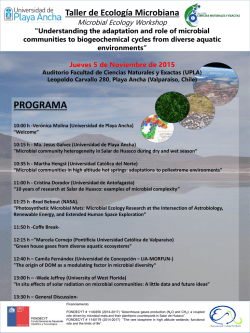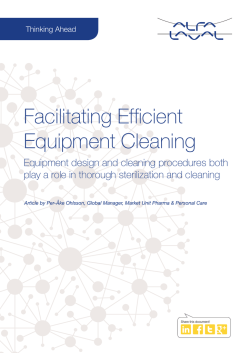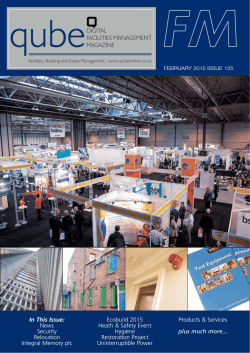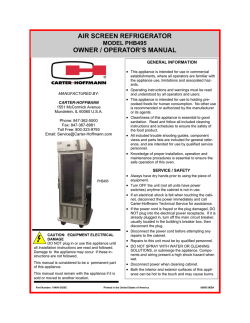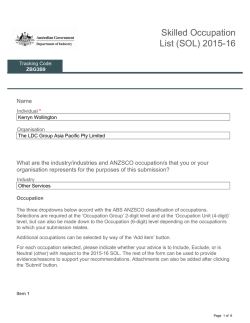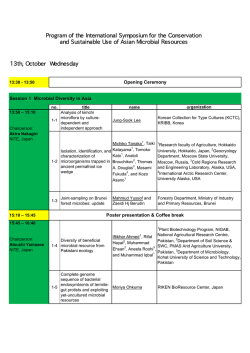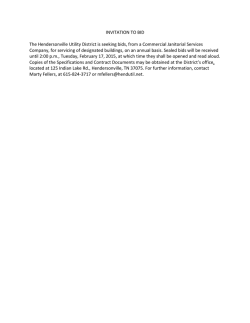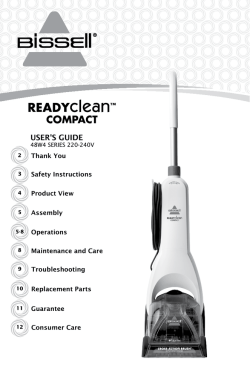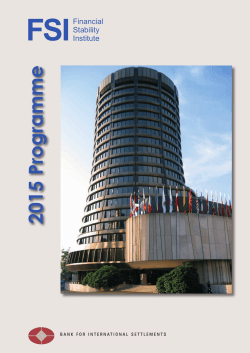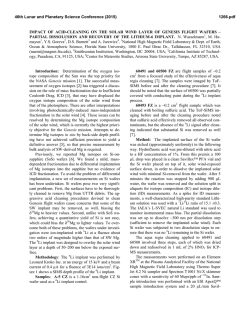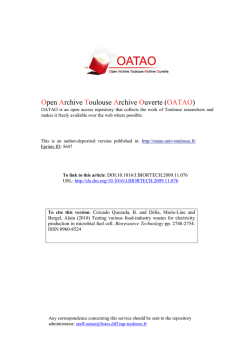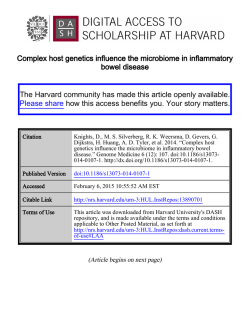
1318
46th Lunar and Planetary Science Conference (2015) 1318.pdf PLANETARY PROTECTION CLEANING PROCEDURES FOR LIFE DETECTION ON MARS. Y. Blanco1, I. Gallardo-Carreño1, G. de Diego-Castilla1, M. H. Abraham2, A. F. Davila2, C. R. Stoker2, C. P. Mckay2, and V. Parro1. 1Centro de Astrobiología (INTA-CSIC), Carretera de Ajalvir km4, Torrejón de Ardoz, Madrid, Spain, [email protected], 2NASA-Ames Reasearch Center, Moffet Field, CA, USA. Introduction: The proposed Icebreaker mission to Mars seeks to find organic biosignatures in ice-rich soils of the northern plains, where transient habitable conditions might have occurred within the last 1 Myr, during high obliquity cycles [1]. The Signs of Life Detector (SOLID) Instrument, part of the Icebreaker mission science payload, has been developed to search for a specific suit of molecular biomarkers using Fluorescence Sandwich Immunoassay (FSI). In a FSI, purposely selected Antibodies (Abs) recognize and bind to desired biomarkers or Antigens (Ag) with high specificity [2]. Abs recognize and bind to a small region of the Ag, called the epitope. SOLID extracts by ultrasonication the biomarker molecules in solid material into a liquid buffer and then they can be detected with an antibody microarray (bArray). As such, it and its sample delivery path are the areas with the greatest need for monitoring and prevention of biological contamination that might affect the scientific data. The only possible contaminations that can be detected by SOLID are molecules that can be captured and identified by SOLID’s highly selective antibodies. Although NASA dry heat microbial reduction (DHMR) procedure has to be applied at a level per the planetary protection directives, it does not eliminate terrestrial bio-markers from entering the sample path because they are not destroyed by the DHMR temperatures (around 110 ºC). Objectives: The objective is to test efficient procedures for the removal of complex organic biomarkers and to avoid microbial growth that could be detected by life detector instruments like SOLID. Therefore, to prevent terrestrial contamination from producing unwanted results we need: a) cleaning the sample chain and instrument to minimize terrestrial biomolecules that may be detectable and preventing microbial growth inside the instrument; b) avoid microbial growth in the liquid buffer. Experimental design: a) Cleaning the sample chain. Three identical fluidic devices simulating SOLID analysis module with tubes and chambers were exhaustively cleaned and then contaminated with 107 Bacillus subtilis spores and 10 µg/mL of the bacterial protein GroEL. Then, the liquid was removed by pipetting and with compressed air and different treatments were applied: Control (just leave on the bench), Heating at 110ºC for 50 h (as DHMR), Washing/cleaning with sterile ddH20, 5% bleach, 3% H2O2 for 30 min, and 96% ethanol. Remains of liquid were removed by compressed air and the devices were left dry at ambient temperatutre in a sterile laminar flow cabin. b) The extraction buffer is heat sterilized by autoclaving and then a bacteriostatic (0.01 sodium azide) was added. In addition, the extraction buffer contains a mild detergent (tween 20) which also contribute to avoid microbial growth. Immunoassay and viable spore counting. The “contaminants” were recovered by exhaustive washing with 0.5 mL of SOLID extraction/incubation buffer and recovery by pipetting. The recovered solution/suspension was directly assayed by FSI with antiB. subtilis spores and anti-GroEL antibodies [2,3], and by viable spores counting through plating serial dilutions on nutrient broth Petri Dishes. . Figure 1. Experimental setup. Three identical multiarray analysis chamber devices were contaminated and processed as explain in the text. Results: The recovered samples were analyzed by FSI, and the fluorescence intensisty quantified and plotted (Figure 2). In parallel, serial dilutions were plated on nutrient broth for viable counts. Results showed a strong bioburden reduction (nearly 4 orders or magnitude) with heat treatment. The chemical cleaning was slightly more efficient (Figure 2, top). Remarkably, the immunological assay showed that the spore immunoreactive material after heat treatment was only reduced to 50% while cleaning method reduced it to less than 10%. In the case of the bacterial protein GroEL, both heat and cleaning showed a strong effect and the im- 46th Lunar and Planetary Science Conference (2015) munoreactive material after treatmet was nearly negligible. This indicated that heat denatured the protein to the level of destroying the structure of the antibody binding sites (mostly 3D structures rather than linear). 1318.pdf centage related to the blank control (contaminated but not treated afterwards). Discussion: The Icebreaker mission seeks to find organic biosignatures in ice-rich soils of the northern plains of Mars. It is imperative to develop decontamiation procedures to remove any terrestrial target that could be detected by SOLID. The whole sample path, surfaces and inner parts (fluidic channels and incubation chambers) will be exhaustively cleaned with (sequentially) sterile water, 5% bleach, 3% sodium hydroxide, and ethanol. Herein we have demonstrated that this procedure is more efficient than heat sterilization both for bioburden and biomolecules reduction. DHMR only kills cells or denaturalize proteins but does not remove them, and these remains can be detected by SOLID. References: [1] McKay et al., (2013) Astrobiology, 13, 334353. [2] Parro et al., (2011) Astrobiology 11, 15-28. [3] de Diego-Castilla G. et al. (2011) Astrobiology 11, 759-73. Additional Information: Funded by Spanish Ministry MINECO No. AYA2011-24803. Figure 2. Effect of heat treatment versus chemical washing/cleaning procedure. Fluorescent sandwich immunoassays (FSI) to detect B. subtilis spores and GroEL protein contaminating the fluidic devices after different treatments. Fluorescence is expressed as per-
© Copyright 2025
